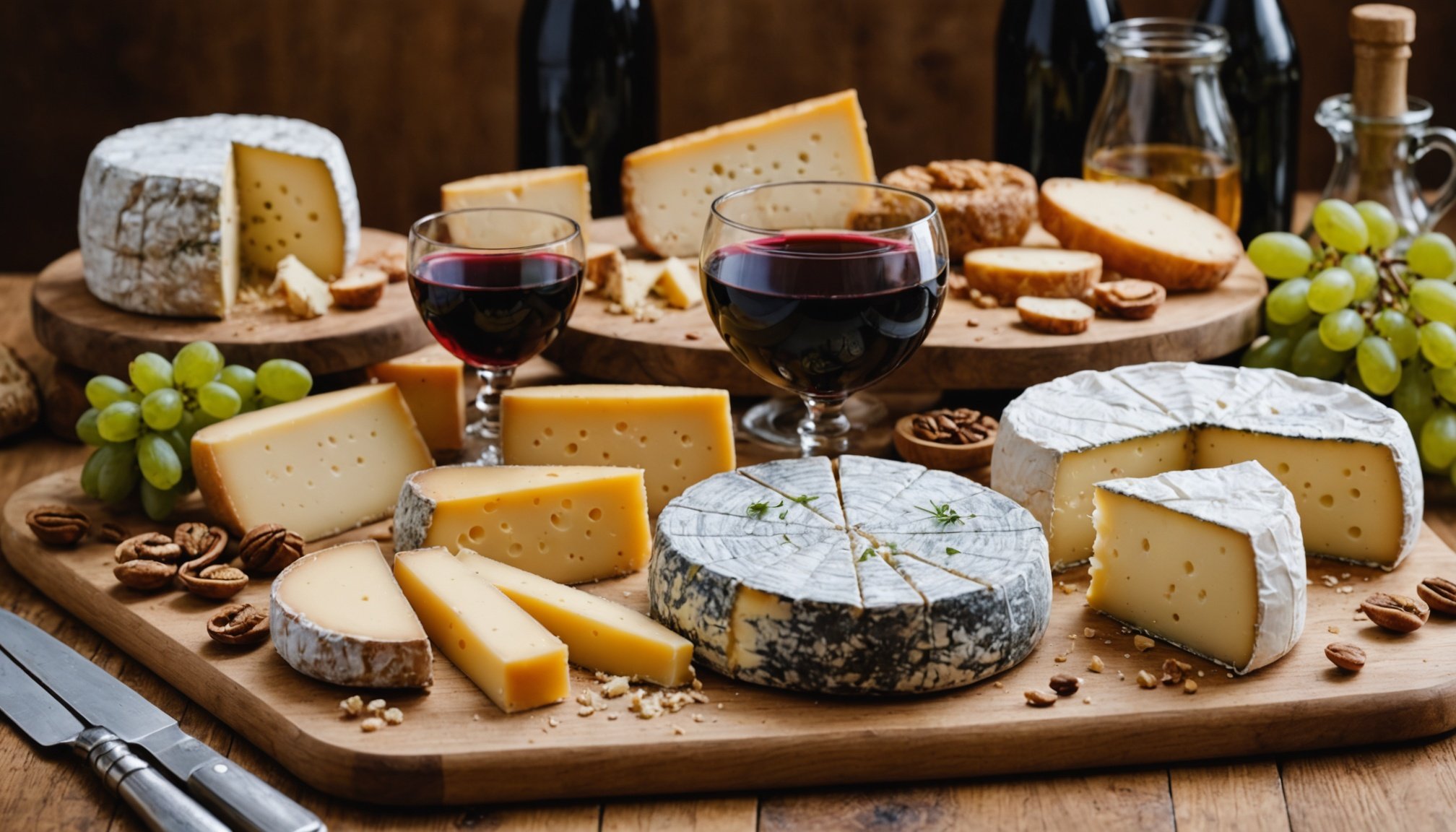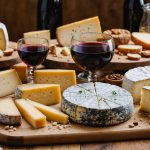Unveiling Flavour: How UK Artisan Cheese Shops Can Harness Blogging to Identify Ideal Pairings
In the world of artisanal cheese, the art of pairing is as crucial as the cheese itself. For UK artisan cheese shops, blogging can be a powerful tool to not only engage with customers but also to educate them on the best pairings that elevate the cheese-eating experience. Here’s how blogging can help uncover these perfect matches and why it’s a strategy that shops should embrace.
The Power of Blogging in Cheese Pairing
Blogging is more than just a way to share recipes or product updates; it’s a platform to build a community and share expertise. When it comes to cheese pairing, a well-crafted blog post can guide customers through the complex world of flavors and textures, helping them make informed choices.
Also to see : Harnessing LinkedIn to Propel UK Eco-Friendly Brands: Proven B2B Strategies for Success
Building Trust and Expertise
By sharing detailed posts on cheese pairing, artisan cheese shops can establish themselves as authorities in the field. For instance, a blog post on “The Best Cheeses to Pair with Cognac” can delve into the nuances of different Cognac age statements and the cheeses that complement them best. As Molly Horn, Chief Mixologist and Spirits Educator at Total Wine & More, notes, “Different age statements of Cognac match best with different styles of cheese. The older the Cognac, the bolder the cheese”[2].
This kind of expertise builds trust with customers, who are more likely to return to a shop that offers valuable advice and insights.
Additional reading : Unlocking Consumer Power: Dynamic Content Marketing Tactics for UK Organic Beauty Brands
Engaging with Customers
Blogging allows shops to engage with their customers in a more personal way. By sharing stories behind specific cheeses, the history of certain pairings, or even personal anecdotes, shops can create a connection that goes beyond a simple transaction.
For example, a blog post about “Creating the Perfect Christmas Cheeseboard” can include tips on selecting seasonal cheeses, pairing flavors, and presenting the board in a visually appealing way. This not only helps customers prepare for their holiday gatherings but also makes them feel like they are part of a larger community[1].
Identifying Ideal Pairings Through Blogging
So, how can blogging help identify the best pairings? Here are some strategies and examples:
Cheese and Fruit Pairings
One of the simplest yet most effective pairings is cheese and fruit. A blog post on “The Best Cheese Pairing For Apples” can highlight how sweet, crisp apples like Galas and Honeycrisps pair perfectly with simple cheddar or French Comté cheeses. Matthew Rose, partner of Fairfield and Greenwich Cheese Company, explains, “Apples are best paired with dense, fudgy, and powerful cow’s milk cheeses. The dense and savory acidity of the cheese and the intensely bright fruit with some sweetness will never not be breathtaking”[4].
Great Apple and Cheddar Pairing Recommendations:
- Gala Apples: Mildly sweet and crisp, perfect for balancing the saltiness of cheddar.
- Honeycrisp Apples: Similar to Galas, offering a sweet and crunchy texture.
- Fuji Apples: Another good option with a sweet flavor and crisp texture.
- Avoid Soft Apples: Types like Crimson Golds or Opals can clash with the texture of cheddar.
Cheese and Spirits Pairings
Pairing cheese with spirits like Cognac can be a sophisticated and enjoyable experience. A blog post on this topic can guide readers through the different age statements of Cognac and the cheeses that pair best with each.
Cognac and Cheese Pairing Guide:
| Cognac Age Statement | Recommended Cheeses |
|---|---|
| V.S. (Very Special) | Creamy cheeses like Brie and Camembert |
| V.S.O.P. (Very Superior Old Pale) | Aged cheddars, mature Goudas, mixed milk cheeses |
| X.O. (Extra Old) | Rich, nutty cheeses like Comté or aged Gruyère |
As Horn explains, “The older the Cognac, the bolder the cheese. X.O. Cognacs pair best with rich, nutty cheeses that highlight similar notes in the spirit”[2].
Cheese and Chocolate Pairings
For those with a sweet tooth, pairing cheese with chocolate can be a delightful surprise. A blog post on this topic could explore how dark chocolate, for instance, pairs well with certain types of cheese.
Cheese and Dark Chocolate Pairing Tips:
- Blue Cheese and Dark Chocolate: The bold, pungent flavor of blue cheese is balanced by the rich, sweetness of dark chocolate.
- Goat Cheese and Dark Chocolate: The creamy texture of goat cheese complements the smoothness of dark chocolate.
- Aged Cheddar and Dark Chocolate: The sharpness of aged cheddar is softened by the sweetness of dark chocolate.
Practical Tips for Blogging About Cheese Pairings
To make your blog posts engaging and informative, here are some practical tips:
Use High-Quality Images
Including high-quality images of the cheese boards, pairings, and even the process of preparing them can make the content more appealing. A photo of a beautifully arranged Christmas cheeseboard, for example, can inspire readers to create their own[1].
Photo Credit Tips:
- Always credit the photographer if the images are not your own.
- Use images that are relevant and of high resolution.
- Consider using lifestyle shots that show the cheese in a real setting.
Provide Detailed Descriptions
Detailed descriptions of the cheeses, their origins, and the reasons why they pair well together can help readers understand the nuances of each pairing.
Example:
“When pairing apples with cheddar, the key is to balance the sweetness of the apple with the savory acidity of the cheese. A Gala apple, with its mild sweetness and crisp texture, pairs perfectly with a sharp cheddar, creating a harmonious balance of flavors”[4].
Include Customer Feedback and Stories
Sharing customer feedback and stories can add a personal touch to your blog posts. For instance, a post about a customer’s favorite cheese pairing can include their story and why they love that particular combination.
Customer Story Example:
“One of our regular customers, Sarah, loves pairing our port-infused Stilton with cranberries during Christmas. She says it adds a special touch to her holiday gatherings and is always a hit with her guests”[1].
The Impact of Blogging on Customer Engagement
Blogging about cheese pairings can significantly impact customer engagement in several ways:
Increased Website Traffic
Well-written and informative blog posts can attract more visitors to your website. By optimizing your posts with relevant keywords, you can improve your search engine rankings and drive more organic traffic.
Social Media Sharing
Engaging blog posts are more likely to be shared on social media platforms. This can help you reach a wider audience and build a community around your shop.
Customer Loyalty
By providing valuable content, you build trust and loyalty with your customers. They are more likely to return to your shop and recommend it to others.
Blogging is a powerful tool for UK artisan cheese shops to identify and share ideal cheese pairings. By providing detailed descriptions, high-quality images, and engaging stories, shops can educate and engage their customers. Whether it’s pairing cheese with apples, Cognac, or dark chocolate, the key is to share expertise and build a community around the love of cheese.
Final Tips for Your Blogging Journey:
- Know Your Audience: Understand what your customers are looking for and tailor your content accordingly.
- Be Consistent: Regularly update your blog to keep your audience engaged.
- Engage with Comments: Respond to comments and questions to build a dialogue with your readers.
- Use SEO Best Practices: Optimize your posts for search engines to increase visibility.
By embracing blogging as a part of your marketing strategy, you can elevate the cheese-eating experience for your customers and establish your shop as a go-to destination for cheese enthusiasts. So, take the time to share your knowledge, and watch your shop become the heart of the cheese community.











